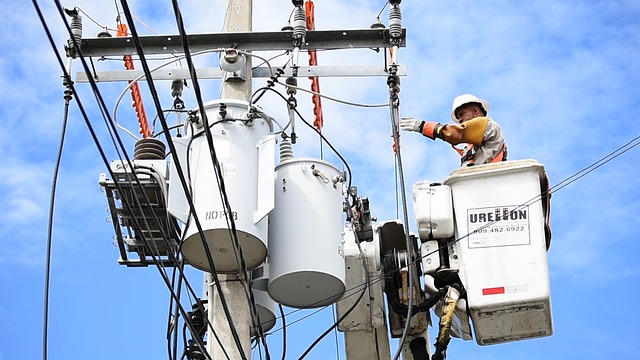How Dissolved Gas Analysis (DGA) Prevents Energy Waste
Every day, transformers silently work to keep our lights on, businesses running and communities powered. But these complex machines are constantly under stress, generating tiny amounts of gases that can tell a big story about their health.
Dissolved gas analysis (DGA) is like a secret language that reveals exactly what’s happening inside these vital pieces of infrastructure — a superhero technology that catches potential problems before they become power grid catastrophes. Explore the key ways DGA prevents energy waste.
1. Detecting Transformer Issues Early
Transformers distribute electricity from the grid into our homes and offices but degrade over time. These sophisticated electrical systems generate unique gas signatures when experiencing stress as early warning signals. These gases primarily include the following:
- Hydrogen
- Oxygen
- Nitrogen
- Carbon monoxide (CO)
- Carbon dioxide (CO2)
- Methane
- Ethylene
- Ethane
- Acetylene
Modern diagnostic techniques have evolved far beyond simple gas content measurement. Today’s approaches integrate advanced statistical analysis, comparing gas proportions and tracking generation rates to predict potential failures with remarkable precision.
DGA detects these contaminants early, identifying potential issues like overheating or electrical arcing before they lead to energy losses or complete transformer failure. A faulty transformer operates inefficiently, resulting in excessive power usage.
Beyond spotting inefficiencies, DGA also allows for predictive maintenance. By analyzing the type and concentration of gases present, professionals can forecast potential failures before they happen. This means costly emergency repairs and sudden power disruptions can be prevented, ultimately saving money and resources. Additionally, well-maintained transformers ensure consistent energy output, reducing fluctuations that can affect sensitive electrical devices in homes and gardens.
2. Preventing Power Disruptions and Environmental Hazards
Power grid reliability depends on the health of transformers. If a major transformer fails, it can lead to outages that affect entire neighborhoods or agricultural operations. DGA helps utilities detect faults before they cause widespread disruptions, ensuring a reliable energy supply.
Energy waste is costly and contributes to pollution. Inefficient electrical systems, often sourced from fossil fuels, require more power, leading to higher carbon emissions. Additionally, transformer failures can result in oil leaks, contaminating soil and water. By utilizing DGA, we can proactively prevent such environmental hazards.
Less conservative standards consider hydrogen levels under 500 PPM normal, while more conservative assessments recommend keeping levels below 100 PPM. Therefore, hydrogen concentrations above 100 parts per million (PPM) can reveal partial discharge. If gases like hydrogen and acetylene accumulate to dangerous levels, they can cause explosions and fires.
Transformer explosions are rare but can be disastrous. DGA helps detect these warning signs early, ensuring timely maintenance and preventing potentially life-threatening incidents. Monitoring these values ensures transformers function safely and efficiently, preventing unnecessary energy waste and dangerous failures. This is behind the proliferation of “Cleantech” companies that bid to innovate gadgets and processes to lower energy costs and keep track of your home’s electricity consumption, like Ting and Wally.
3. Saving Costs and Supporting Renewable Energy
Transformer inefficiencies inflate electricity bills for those relying on the electrical grid for greenhouses, irrigation, or home energy needs. By identifying and addressing gas-related issues early, DGA helps homeowners and gardeners reduce unnecessary costs and optimize energy usage.
Furthermore, transformer reliability is indispensable when solar panels or wind turbines are connected to the grid. Sudden failures can cause power fluctuations that reduce the effectiveness of renewable energy sources. DGA makes sure transformers supporting green energy remain stable, preventing energy losses.
Just imagine living in a community that’s resistant to power outages. This is the reality for 155 families in Hillside, a neighborhood in South Burlington, Vermont — thanks to a Resiliency Package of in-home Tesla Powerwall batteries to support energy efficiency measures, solar power generation and battery storage capacity. This added resilience is particularly valuable in rural or remote areas where power restoration can take longer.
DGA can help homeowners and gardeners make informed energy management decisions. By knowing the health status of their electrical systems, they can better plan for upgrades, replacements or preventive measures, minimizing financial strain in the long run. This level of control helps optimize energy efficiency, reducing overall power consumption and associated costs.
The economic stakes of transformer maintenance are enormous. A single power transformer can cost between $3,000 and $4,000, but shortages in areas like Roseville, California, have increased by over 500%. This makes early detection through dissolved gas analysis not just a technical strategy but an essential economic imperative.
Additionally, as climate change drives more extreme weather events, power reliability is becoming a concern. Storms, heat waves, and freezing conditions can all strain electrical transformers, increasing the likelihood of failures. Regular DGA monitoring can help mitigate these risks by providing early warnings about transformer stress, allowing homeowners and businesses to take action before an outage.
4. The Science and Future of Transformer Diagnostics
Researchers are developing cutting-edge technologies that promise to revolutionize infrastructure maintenance, including IoT-integrated monitoring systems and machine-learning algorithms that can anticipate transformer issues.
Global power infrastructure is rapidly changing, with the transformer market expected to reach $49.4 billion by 2033. This growth demands more sophisticated diagnostic tools to handle increasingly complex electrical systems, as renewable energy sources and innovative grid technologies become more prevalent.
The most promising developments lie in nanotechnology and artificial intelligence. Emerging nanosensors can detect molecular-level gas changes, providing unprecedented insights into transformer health. Machine learning models are being trained to recognize intricate patterns that human analysts might miss, potentially preventing failures that could lead to widespread power disruptions.
How Is DGA Testing Done?
DGA testing begins with taking an oil sample from the transformer. Technicians carefully extract the oil to avoid contamination, ensuring accurate results. The sample is then sent to a lab, where the gases dissolved in the oil are separated — usually with a vacuum or stripping method.
Once the gases are extracted, they go through gas chromatography, a process that identifies and measures different gases like hydrogen, methane and carbon monoxide. The type and amount of gases present can reveal if the transformer is running smoothly or if there are early signs of problems like overheating or insulation failure.
Once the gases are measured, experts compare the results to industry guidelines or past data from the same transformer. They use diagnostic tools — like the Duval Triangle or Rogers Radio — to figure out what’s causing the issue. If certain gases are too high, it could mean trouble and maintenance teams will step in before the transformer fails.
Many energy companies do DGA resting regularly, tracking changes over time to fix small problems before they escalate. This keeps transformers running efficiently, prevents energy waste, and avoids costly breakdowns.
The Bottom Line
While DGA might seem like a technical detail best left to utility companies, its impact touches every aspect of our daily lives. From keeping our lights on to preventing environmental damage, this powerful diagnostic tool streamlines the energy infrastructure communities depend on.
The next time you hear about your utility company performing transformer maintenance, remember that these preventive measures, including DGA testing, are essential investments in our community’s energy future. They’re helping create a more reliable, efficient, and sustainable power grid for everyone.
Jack Shaw is the senior Outdoors writer for Modded, a men’s lifestyle publication. An avid outdoorsman and lover of nature, he’ll often find himself taking retreats out to explore his environment and encourages others to do the same in ways that are sustainable and beneficial to the environment.
Image by alcangel144






